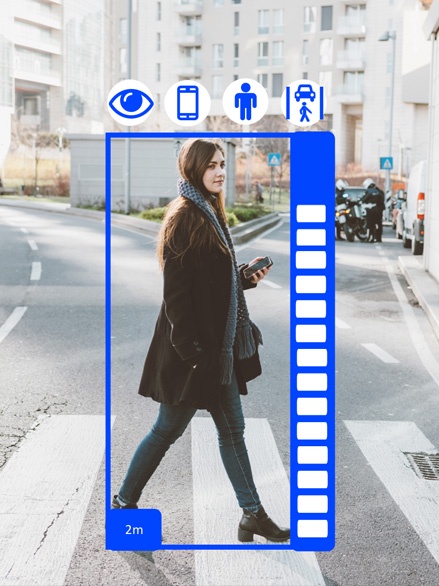Dedicated annotation providers conduct various annotation processes according to the data type and desired model. For instance, image annotation focus on helping models discern intended target subjects/objects in image data samples from the other unwanted elements present in them. With the development of technology, annotation is also taking new forms, the most notable one being Natural Language Processing (NLP) used for virtual assistants present in smart voice-activated devices and programs.
Data annotation is, therefore, an inescapable part of business development today as it’s at the heart of AI/ML training. If you’re in the dark about its specifics, like what the technology is exactly, the tools used, and present & future trends, then this blog is for you. Continue reading to learn how best to incorporate data learning to your needs through data annotation.
What Is Data Annotation?
Data annotation refers to the process of tagging portions of data in a given sample by qualified professionals to help Machine Learning, and by extension AI, models identify and utilize them for the required purpose. This is necessary as computers lack the inherent capability and intuition to recognize the data. The ability to do so must be added during their training so that the final model can do it by itself.
The target data in every sample, whether used for training or testing, get demarcated using a variety of boundary conditions. Different annotation processes cover different types and data segments, and it’s up to the professionals to choose the correct one. The ML algorithms are introduced to such annotated data in large numbers until they acquire the expected accuracy in recognizing the target subject in random, unannotated data samples fed to it.
Below are the different types of data annotation processes and their subcategories.
-
Image Annotation
Image annotation are used to help algorithms recognize objects in image data. They can also be extended to videos, where each frame is treated as an individual image. It contains the following types:
-
Classification
It consists of tagging images/frames and grouping them under various classes to help algorithms recognize the entirety of the image or frame. It’s the most basic form of classification, helping the AI detect similar images/frames in a data set and with data abstraction.
-
Object Detection and Recognition
It’s similar to classification but goes more in-depth to discover more information about the target subject, like location, size, etc. It uses boundaries for the purpose and can detect multiple classes of objects in an image.
-
Segmentation
Creates multiple segments in an image or frame by defining the target objects on a pixel level. It’s the most complex and accurate of the three types and has the following sub-types:
- Semantic
It helps algorithms develop context by aiding in distinguishing similar objects in an image/frame. It also gives further information about them like presence, shape, etc.
- Instance
Recognizes the presence of objects and their location in the image beside the information from the previous sub-type. Helps filter out unwanted information.
- Panoptic
A hybridized version of the above two subtypes. It helps algorithms identify both the target subjects/objects and the background.
-
Boundary Identification
Usually used in the other annotation types, it helps create boundaries to separate various items in an image for identification purposes. It is also used to automate annotation, where algorithms recognize linear objects using lines and curves.
-
Audio Annotation
The annotation technique is used to handle speech and voice similarly to humans. Various audio annotation approaches can be used depending on the objectives of a project.
-
Sound Labeling
It involves specialists selecting the necessary sounds from an audio data set and labeling them. It's a method for finding and extracting words and phrases from audio data samples.
-
Event Tracking
It aids in assessing the system's effectiveness in multi-source audio data settings that closely mirror real-world circumstances with overlapping sounds.
-
Speech-to-Text Transcription
Key elements of speech, including words, sounds, and punctuation, are carefully documented, and pertinent terms are annotated.
-
Audio Classification
It involves listening to and analyzing audio data using an algorithm to distinguish noises and spoken instructions. It is fundamental to develop programs for text-to-speech, automatic voice recognition, and virtual assistants. It is available in the following types:
- Acoustic Data Classification
Helps pinpoint the location of the recording, like halls, stone corridors, rooms, the outdoors, etc. It serves a purpose in sound library upkeep and system monitoring.
- Classification of Music
Various musical genres, instrumentation, ensembles, etc., are sorted into their appropriate categories to enhance suggestions and organize music libraries.
- Classification of Natural Spoken Language
Enables chatbots, virtual assistants, and related technology to comprehend human speech more accurately by putting dialect, semantics, inflections, and other such features into categories.
-
Text Annotation
Trains AI/ML models to identify textual data targets in a data set. It may occasionally be used in conjunction with a Voice/Audio Annotation tool, like with Natural Language Processing (NLP). Several text annotation approaches are in use:
-
Entity Annotation
Locates, extracts and labels target entities in text for chatbots that employ NLP models to assist them in recognizing speech components, notably named entities and keywords/phrases. Entity linking is paired with entity annotation to improve the results.
Three different types exist:
- Named Entity Recognition (NER): This technique involves giving proper names to entities.
- Keyphrase Tagging: Identifying and labeling keyphrases or keywords in collections of text.
- Part-of-Speech (POS) Tagging: Adjectives, nouns, adverbs, and other functional speech elements are identified and annotated.
-
Entities Linking
This procedure links the entities found and annotated during entity annotation to sizable data repositories. It helps search engine algorithms enhance their search capabilities and deliver more precise results. Labeled entities are linked to URLs that provide extra information about them. It comes in two varieties:
- Disambiguation: involves connecting them to databases that have information about them.
- End-to-end: Entities are analyzed, annotated, and engaged within a textual data collection (also known as entity recognition) along with entity disambiguation.
- Text Classification: Also known as document classification and text categorization. When you outsource text annotation, experts analyze a body of text or a few lines of text to establish its subject, intent, and sentiment before categorizing it according to a set of predetermined categories. Used when a text body needs single label annotation.
The following are its subcategories:
- Document classification: is used to sort documents and recall textual material from them.
- Product categorization: Most useful for eCommerce platforms. Aids the organization of goods into categories and intuitive classes to categorize eCommerce product listing.
- Sentiment Annotation: Labels the selected segment based on the sentiment, emotion, or opinion contained in the text data when classifying it.
Data Annotation Trends
Here’s a look at the status of data annotation at present and its likely future:
- Over US$629.5 Million was spent by businesses on data annotation tools globally in 2021.
- The CAGR of data annotation tools investment is expected to be 26.6% between 2022 and 2030.
- Training self-driving vehicle AI using data annotation is expected to increase as demand for such vehicles grows since it’s vital for recognizing various obstacles and objects.
- The growth of voice-based interaction with devices will drive data annotation in the audio and text spheres.
- Using AI and ML algorithms for increasingly complex tasks will increase the demand for deep learning using data annotation.
- Data annotation will play a more significant role in security systems with the increased adoption of facial and other biometric IDs.
- Satellite imagery will be a great beneficiary of data annotation as the AI needs to recognize terrain, objects, height, etc. It’ll be very useful in military, planetary, and space exploration.
- The healthcare industry will benefit immensely from accurate AI-based diagnoses from data annotation.
Data Annotation Tools
A sophisticated process like data annotation needs the best available hardware and software tools to achieve the desired results. On the hardware front, you need Neural Processing Units (NPUs) and traditional CPUs and GPUs. These chips contain neural network circuits that imitate the human brain in structure and operation, helping the model learn and adapt.
On the software front, these are the most frequently used tools:
-
Commercial
- Annotell
- Dataloop AI
- Datasaur AI
- Deepen AI
- Hasty
- Hivemind
- LightTag
- UnderstandAI
- V7 Labs Darwin
-
Open Source
- CVAT
- Fiji
- Labelling
- LabelMe
- VoTT
-
Freeware
-
- Colabeler
In Conclusion
The demand for increasingly-intelligent AI and ML models is on the rise. It follows that the advantages they offer will be fully exploited by businesses to gain an edge over the competition. You can also join those ranks by adopting the best data annotation practices, like outsourcing video annotation to a trusted and capable provider, to develop your models.


No comments yet